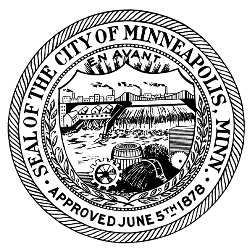Minneapolis Erroneously Touts “Historic” and “Record” Vote in 2025 Municipal Election
This cycle’s turnout does not crack the top third for Minneapolis municipal elections over the last century
 This is the second in a series of reports on Minneapolis municipal elections
This is the second in a series of reports on Minneapolis municipal elections
The day after Jacob Frey’s barest of majority victories on Tuesday (45 votes above a plurality), the City of Minneapolis put out a press release entitled: “Minneapolis sets record with most votes cast in a municipal election.”
The press released stated:
“A record-setting number of Minneapolis voters made their voices heard in the 2025 Municipal Election. According to unofficial results, 147,702 voters – 55% of registered voters – cast their ballot in the 2025 Municipal Election….The unofficial 2025 numbers breaks the previous record of 54% turnout in the 2021 election when 145,337 voters participated.”
The press release goes on to quote Director of Elections & Voter Services Katie Smith who states, “This year’s record-breaking turnout is something our entire City can be proud of.”
While Minneapolis may have strong turnout compared to many major cities holding off-cycle elections in the United States, Smart Politics reviewed more than a century of Minneapolis municipal elections and found that the 2025 turnout does not even rank in the Top 10.
The City of Minneapolis calculates ‘voter turnout’ as the number of voters casting a ballot in the municipal election divided by the number of registered voters in the city for that cycle.
As quoted above, 147,702 of 268,609 registered voters participated in the 2025 election, or 55.0 percent.
That ranks as only the 15th highest turnout of registered voters in Minneapolis across the 42 mayoral election cycles conducted since 1921 after the right to vote was extended to women.
For starters, voter turnout has eclipsed 60 percent nine times in Minneapolis municipal elections since 1921 including twice over 80 percent and once over 90 percent.
In 1921, following the ratification of the 19th Amendment, the City of Minneapolis recorded a turnout rate of an astounding 91.4 percent in a mayoral cycle featuring Brigadier General and insurance agent George Leach and former Socialist Mayor Thomas Van Lear.
A total of 143,833 of 157,307 registered voters participated in the municipal election with Leach winning 55.2 percent of the vote en route to his first of six nonconsecutive terms.
Also of note was the subsequent 1923 cycle, when Mayor Leach was reelected with 52.3 percent of the vote against former State Senator William A. Campbell.
In that June’s municipal election, 98,244 of 122,094 registered voters took to the polls, or 80.5 percent.
Minneapolis has not recorded a turnout north of 70 percent in municipal elections ever since, but eclipsed the 60 percent mark in seven other cycles:
- 1927 (69.7 percent; 111,291 of 159,609 registered voters): Mayor Leach defeated City Council President O.J. Turner with 53.9 percent to win his fourth term
- 1935 (69.4 percent; ~158,000 of 227,758 registered voters): Farmer-Laborite attorney (and former Socialist U.S. House nominee) Thomas Latimer defeated attorney Charles F. Keyes with 56.7 percent
- 1947 (68.3 percent; 156,221 of 228,665 registered voters): Mayor Hubert Humphrey defeated Republican attorney Frank J. Collins with 66.2 percent to win a second term
- 1939 (67.1 percent; 159,728 of 238,026 registered voters): Mayor Leach was reelected to a sixth nonconsecutive term with 52.3 percent against Farmer-Laborite co-operative creamery executive Toralf Eide
- 1931 (66.6 percent; 118,211 of 177,441 registered voters): Farmer-Laborite attorney William A. Anderson won 61.8 percent against former four-term Mayor George Leach
- 1937 (65.2 percent; 163,769 of ~251,000 registered voters): Leach won 55.5 percent defeating Farmer-Laborite state old age assistance administrator Kenneth C. Haycraft to win his fifth nonconsecutive term
- 1933 (62.2 percent; 140,402 of 225,866 registered voters): Republican theater manager A.G. Bainbridge won 53.8 percent against Mayor William A. Anderson
Note: Total votes and the number of registered voters were compiled by Smart Politics from official counts published in contemporary newspaper reports.
Five other cycles also saw a greater turnout than the 2025 cycle:
- 1941 (59.6 percent; 156,289 of 262,265 registered voters): Republican City Council president Marvin Kline won 51.9 percent against failed 1939 general election Farmer-Laborite Toralf Eide
- 1945 (58.2 percent; 142,756 of 245,459 registered voters): DFL industrial and governmental research consultant Hubert Humphrey won 61.0 percent against Mayor Marvin Kline
- 1949 (58.1 percent; 152,119 of 261,796 registered voters): Mayor Eric Hoyer defeated DFL pastor John G. Simmons with 54.9 percent
- 1969 (55.6 percent; 125,062 of 224,858 registered voters): Independent police officer Charles Stenvig received 61.9 percent beating Republican-endorsed Alderman Dan Cohen
- 1951 (55.5 percent; 125,794 of 226,626 registered voters): Mayor Hoyer was elected to his third full term with 80.5 percent against carpenter and political newcomer Hubert P. Irmiter
As noted in last week’s Smart Politics report, the 268,609 registered voters for the 2025 cycle was the fifth highest in Minneapolis municipal election cycle history trailing the 1953 (274,854 registered voters), 1955 (285,636), 1957 (275,579), and 2021 cycles (268,929).
It should also be noted that registering to vote has comparatively become a much easier enterprise in the state in recent years. However, by introducing a lower threshold to get voters registered (increasing the denominator) without motivating residents to actually vote (the numerator), means it will be very difficult for Minneapolis to ever approach landing in the Top 5 for voter turnout in the post-19th Amendment era.
As such, phrases like “historic” and “record-breaking” will likely need to wait much more than four more years.
Follow Smart Politics on X.
